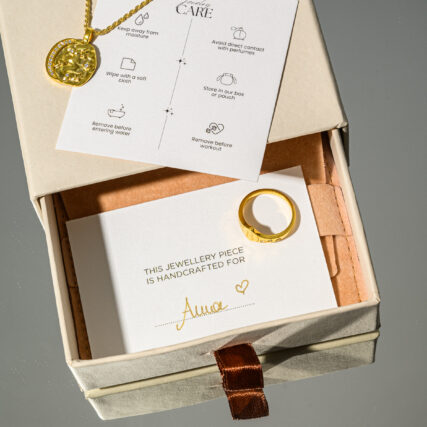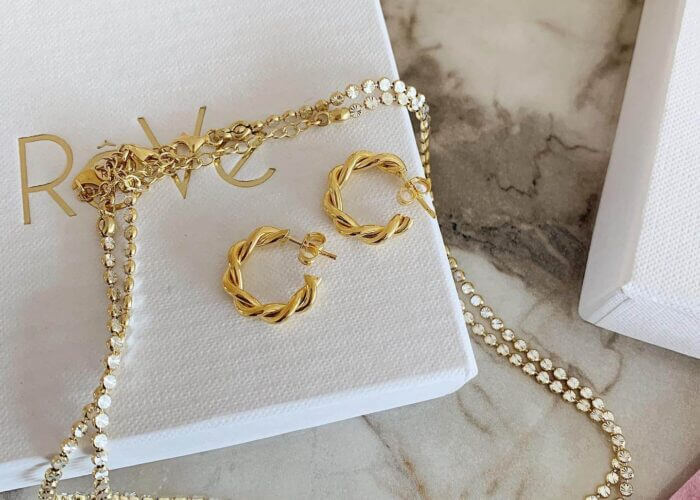The metal of your jewellery can affect how likely it is to tarnish. Understanding these differences will ensure you pick a piece resistant to damage. Though gold vermeil, gold plated and gold filled may all produce a similar look in jewellery, their differences are significant.
Gold plated jewellery is common place in the jewellery market and a big part of many collections. Despite its gold content, this metal type is also highly susceptible to tarnishing. When a piece is gold plated, it means that a thin layer of gold has been applied over the top of another, more affordable metal like brass or copper. Whereas, gold filled jewellery is covered in sheets of gold, also on top of an inexpensive metal base. This makes these pieces vulnerable to scratching and oxidising, often quickly creating that dreaded tarnish effect.
Gold vermeil jewellery uses a similar technique to gold plating, but there are some key factors that set the two apart. For one, gold vermeil uses a much thicker layer of gold than that of gold plated. In the case of gold plated jewellery, the gold content must at least be equal to 0.5 microns. By contrast, gold vermeil requires a layer that is above 2.5 microns. This makes gold vermeil jewellery much less easy to scratch or rub down compared to its gold plated counterparts. Also unlike gold plated and gold filled pieces, gold vermeil has a centre of sterling silver rather than one of the previously mentioned cheaper alternatives. For these reasons, gold vermeil will last against the effects of tarnish and remain beautiful for extended periods of wear.



